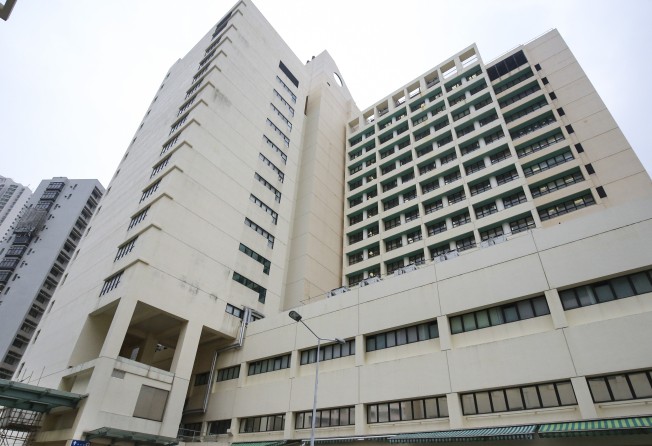Baby girl on life support after error during heart procedure at Hong Kong hospital
Defibrillation equipment was not switched to correct mode while patient was being treated for multiple heart issues

A 50-day-old baby girl is critically ill after undergoing a procedure at Hong Kong’s United Christian Hospital during which the defibrillation equipment was not switched to the proper mode.
An investigation panel will be formed to look into the case, although a cardiologist said the error might not be the main reason for the patient’s condition.
The girl had been brought to the emergency unit of the hospital in Kwun Tong because of poor feeding and shortness of breath at 9.45am on Friday and was admitted to the general paediatric ward, a hospital spokesman said.
An echocardiogram showed she had several heart issues, including an enlarged heart and a dilated left ventricle. She was transferred to the paediatric intensive care unit, where she was then found to have congestive heart failure and was put on ventilator support.
Hours later, the patient developed supraventricular tachycardia – an abnormally fast heart rhythm arising from improper electrical activity in the upper part of the heart – and her heart rate reached 280 beats per minute. Drug treatment was given intravenously, but the situation persisted.
The doctor then performed direct current cardioversion, a medical procedure by which an abnormally fast heart rate is converted to a normal rhythm using electricity, as well as defibrillation and cardiopulmonary resuscitation to address other problems the girl developed.
A normal heartbeat resumed after resuscitation.
Further tests that afternoon showed the patient had several issues, including myocarditis – inflammation of the heart muscle – along with severe heart failure and an irregular heartbeat.
The doctor consulted the department of paediatric cardiology at Queen Mary Hospital at about 3pm for further management, and Queen Mary agreed to take over the case.
At 3.30pm, while waiting to be transferred, the girl once again developed an irregular heartbeat. The doctor immediately performed direct current cardioversion, defibrillation and drug treatment as well as cardiopulmonary resuscitation.
Her heartbeat returned to normal, and she was escorted to Queen Mary Hospital at 4.54pm.
When the doctor later reviewed the electrocardiography and defibrillation resuscitation records, it was noted the defibrillator’s synchronisation mode had not been turned on during direct current cardioversion, although the defibrillation procedures were carried out appropriately, the spokesman said.
In synchronisation mode, the defibrillator delivers low-energy shocks in sync with the patient's cardiac cycle.
The hospital explained the situation to the family on Sunday and apologised for the mistake.
The girl’s condition was given as critical the same day, and she was put on life support.
Cardiologist Dr Bernard Wong Bun-lap said not turning on synchronisation mode was a mistake, but it was “not too rare” considering the hustle in emergency units. He said he believed it might not be the main reason for the girl’s the current situation, considering her heart issues.